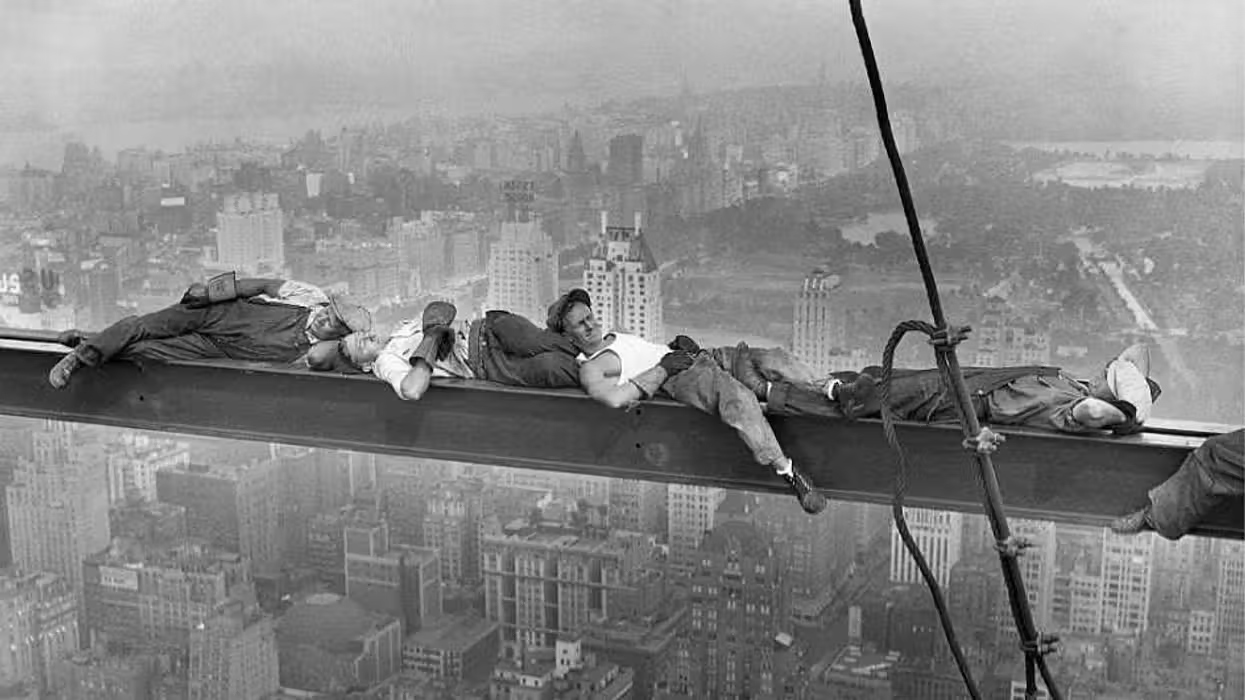
© 2026 Blaze Media LLC. All rights reserved.
Trickster: How Is the Water in This Vid Suspended Mid-Air or Flowing Upward Against Gravity?
April 20, 2012

It's a trick that makes it look like someone has pushed pause during a video of a steady stream of water, making droplets appears if they hang in mid-air. But the video by YouTube contributor "mrbibio" is actually a slightly more complicated illusion, similar to that which is achieved with a strobe light.
First, check out the viral video:
io9 explains mrbibio's secret to how he achieved this phenomenon:
In other words, the camera is shooting at 25 frames per second, which is exactly the same rate that the tube carrying the water is being vibrated by the speaker. Furthermore, the stream of water exiting the tube not only breaks apart into individual droplets, it actually does so in a repeating pattern. As a result, the droplets that form assume a nearly identical shape (and occupy an almost identical point in space) every 1/25th of a second. A slight hiccup in the droplets between 1:49 and 1:56 reveals what happens when the framerate at which the camera is filming falls out of sync with the frequency of the repeating droplet pattern.


In another similar water illusion -- there are actually several of these on the Web -- water is shown frozen in the air and even seems to go backwards against gravity. The Next Web (via Business Insider) states that the YouTube contributor "brusspup" used a subwoofer with a 24 and 23 Hz sine (Note: Skip to 50 seconds if you want to see the flow go "upward"):
Brusspup writes a similar explanation to the previous video how exactly this works:
Basically your cameras frame rate is synced up with the rate of the vibrations of the water so it appears to be frozen or still. Now if you play a 23 hz sine wave your frame rate will be off just a little compared to the sine wave causing the water to “move backward” or so as it appears. You can play a 25 hz sine wave and cause the water to move slowly forward.
If we're going to make the strobe light comparison, io9 explains that the "periods of illumination" and darkness that occur with the flashing light make it look like someone is moving slow when in reality they could be moving relatively fast. io9 included this video of the strobe light effect on water to illustrate the point:
[H/T Business Insider]
Want to leave a tip?
We answer to you. Help keep our content free of advertisers and big tech censorship by leaving a tip today.
Want to join the conversation?
Already a subscriber?
more stories
Sign up for the Blaze newsletter
By signing up, you agree to our Privacy Policy and Terms of Use, and agree to receive content that may sometimes include advertisements. You may opt out at any time.
Related Content
© 2026 Blaze Media LLC. All rights reserved.
Get the stories that matter most delivered directly to your inbox.
By signing up, you agree to our Privacy Policy and Terms of Use, and agree to receive content that may sometimes include advertisements. You may opt out at any time.






